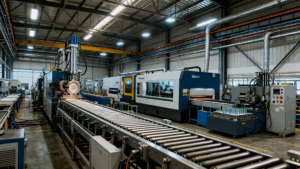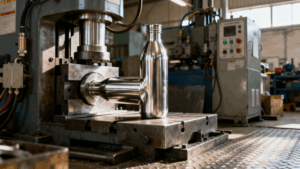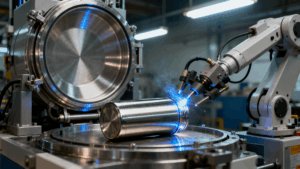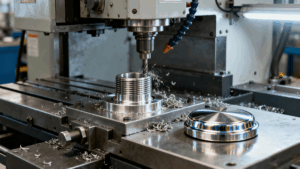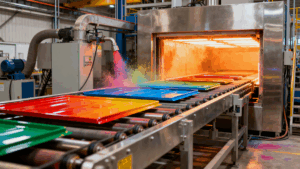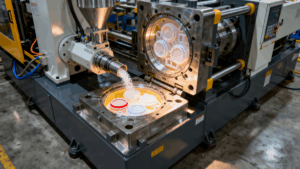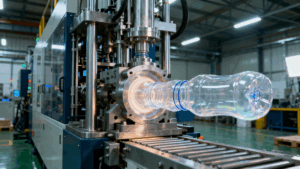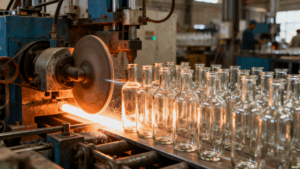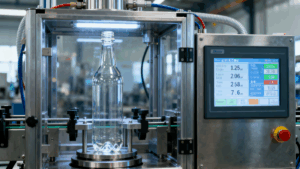Iniciar um fábrica de garrafas de água não se trata apenas de instalar máquinas e contratar trabalhadores. Se estiver interessado em saber como construir uma fábrica de garrafas de água, trata-se de um projeto industrial a longo prazo que requer planeamento, investimento, capacidade de engenharia e um conhecimento profundo dos materiais e das normas de fabrico. Quando começámos Diller, A nossa empresa não começou como uma grande empresa - construímos a fábrica passo a passo, aprendendo com a experiência, resolvendo problemas e melhorando a qualidade ao longo do tempo.
Neste artigo, partilharei como fazer uma fábrica de garrafas de água com base no nosso percurso real na indústria transformadora da China. Quer pretenda construir a sua própria fábrica ou compreender como funciona um fabricante fiável, espero que esta perspetiva honesta o ajude.
Etapa 1: Definir a direção do produto e a posição no mercado
Antes de construir qualquer oficina, tive de responder a uma pergunta básica: Que tipo de garrafas de água queremos produzir? Uma fábrica que produz garrafas de plástico é muito diferente de uma que produz garrafas de aço inoxidável ou de vidro. Cada material requer um processo de produção e instalações diferentes.
No Diller, decidimos desde cedo concentrarmo-nos em:
-
Garrafas isoladas em aço inoxidável
-
Garrafas de plástico para desporto (Tritan/PP/PCTG)
-
Garrafas de água de vidro (vidro borossilicato)
Esta decisão permitiu-nos planear três linhas de produção especializadas em vez de uma fábrica genérica sem um verdadeiro objetivo.
Passo 2: Configurar a infraestrutura da fábrica
Uma fábrica de garrafas de água necessita de áreas funcionais estruturadas. O nosso layout inclui:
| Área | Objetivo |
|---|---|
| Armazenamento de matérias-primas | Stock seguro e limpo de chapas de aço inoxidável, Tritan, PCTG, tubos de vidro |
| Oficina de fabrico | Estiramento, moldagem, moldagem por sopro, CNC, polimento, soldadura |
| Acabamento de superfícies | Revestimento em pó, pintura por pulverização, impressão UV, gravação a laser |
| Linhas de montagem | Montar tampas, vedantes, peças de silicone |
| Laboratório de controlo de qualidade | Ensaios de materiais, ensaios de fugas, ensaios de isolamento |
| Área de embalagem | Embalagem de marca própria e embalagem para exportação |
| Armazém | Processamento de stocks e exportações |
A existência de zonas funcionais claramente divididas melhora a eficiência e cumpre os requisitos de auditoria da produção.
Etapa 3: Aquisição de equipamento industrial
As decisões de equipamento definem a capacidade de produção. No caso do Diller, investimos em:
-
Máquinas de esticar hidráulicas - para moldar corpos de garrafas de aço inoxidável
-
Máquinas de soldadura por vácuo - para garrafas isoladas de parede dupla
-
Máquinas CNC - para rosca de aço inoxidável e encaixe de precisão da tampa
-
Linhas automáticas de revestimento a pó - para acabamentos de cor duradouros
-
Máquinas de moldagem por injeção - para tampas e acessórios de plástico
-
Máquinas de moldagem por sopro de Tritan - para corpos de garrafas de plástico
-
Máquinas de corte e recozimento de vidro - para garrafas de borosilicato
-
Sistemas de teste de fugas e de vácuo - para o controlo da qualidade
Um bom equipamento reduz as taxas de rejeição e apoia o crescimento a longo prazo.
Passo 4: Criar um sistema de controlo de qualidade
Uma fábrica sem gestão da qualidade não pode sobreviver à produção para exportação. Para responder às expectativas dos clientes, construímos uma Sistema QC baseado em:
-
Gestão da qualidade ISO 9001
-
Conformidade com a segurança do contacto com alimentos LFGB / FDA
-
Ensaio de retenção do isolamento
-
Ensaios de corrosão por projeção salina
-
Teste de impacto de queda
-
Teste de vácuo e de fugas
-
Acompanhamento da certificação de materiais
A existência de capacidades de ensaio internas dá confiança aos compradores globais e às marcas de distribuidor.
Etapa 5: Contratar e formar trabalhadores qualificados
A automatização ajuda, mas a indústria transformadora continua a necessitar de trabalhadores qualificados. Damos formação:
-
Técnicos de soldadura
-
Operadores CNC
-
Operadores de moldagem por sopro
-
Engenheiros de tratamento de superfícies
-
inspectores de CQ
-
Equipas de linha de montagem
Sem equipas competentes, as máquinas, por si só, não conseguem produzir uma qualidade consistente.
Passo 6: Manter a conformidade e as certificações
Para exportar com segurança, tivemos de implementar:
-
Auditorias de fábrica BSCI / SEDEX
-
Testes de materiais FDA e LFGB
-
Conformidade REACH para revestimentos
-
Certificação de plástico sem BPA
-
Proteção de design patenteada para clientes OEM
A conformidade não é um processo único; é uma responsabilidade permanente.
Etapa 7: Desenvolver capacidades OEM/ODM
Nesta fase, deixámos de ser apenas um fabricante e passámos a ser um fornecedor de soluções. Acrescentámos:
-
Serviço de conceção de garrafas e de modelação 3D
-
Desenvolvimento de moldes personalizados
-
Marca própria
-
Produção personalizada de MOQ pequeno
-
Desenvolvimento de embalagens
Isto transformou-nos de uma fábrica num parceiro de fabrico para marcas e distribuidores.
O que aprendi com a construção de uma fábrica de garrafas de água
A construção de uma fábrica não se faz de um dia para o outro. É preciso investimento, paciência e disciplina de engenharia. Se eu resumir as lições mais importantes:
Comece por se concentrar no produto
Investir na produção real e não na externalização
Criar sistemas sólidos de qualidade e segurança
Conceção a pensar no cliente final
Crescer passo a passo e melhorar continuamente
no final
Esta viagem transformou a Diller no fabricante que somos atualmente. O nosso objetivo nunca foi apenas produzir garrafas, mas sim construir produtos de hidratação seguros, funcionais e duradouros em que as pessoas confiam. Se está a planear iniciar uma fábrica de garrafas de água ou a procurar uma para fazer parceria, espero que esta perspetiva real ajude.

